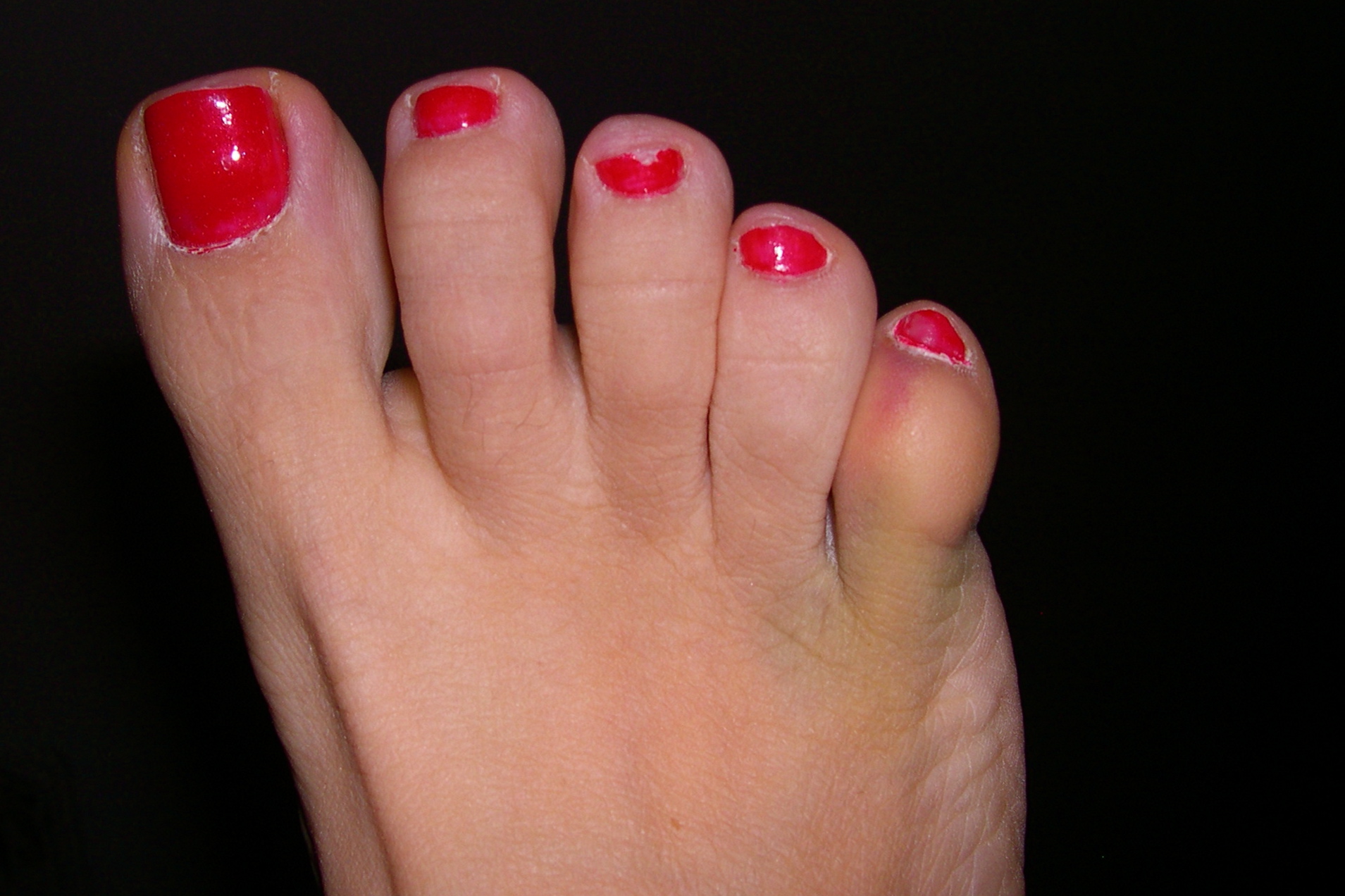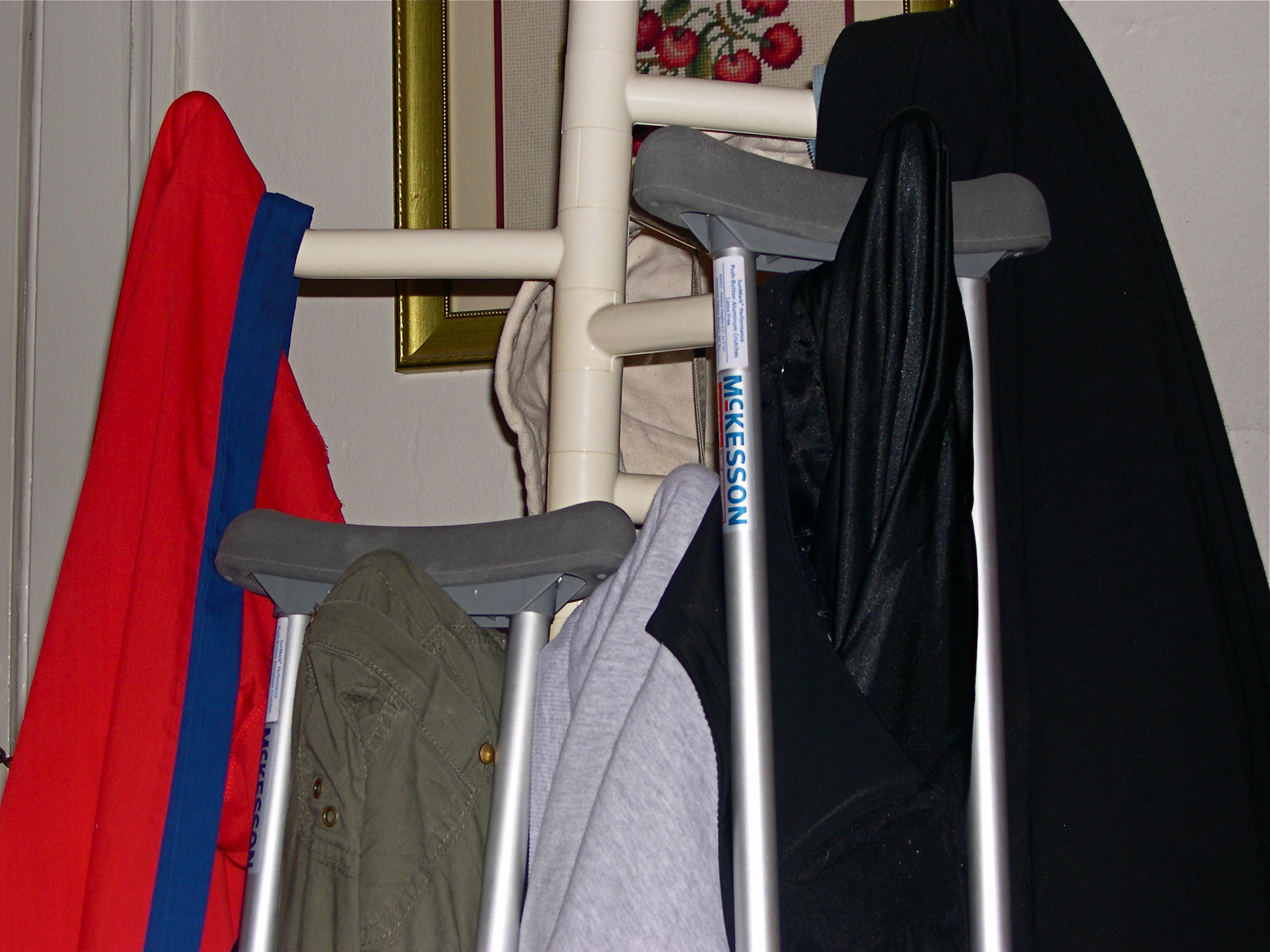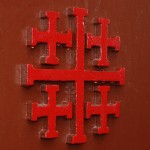I’m one of those people who is so afraid of missing a life lesson that I sometimes don’t even let the complete experience play out before I’m deconstructing it, analyzing it, and trying to figure out what I’m supposed to be learning from it all. So even before the actual heel break, I was already seriously wondering what was going on with all the foot pain. Was there some deeper meaning to all this? (FYI: I think there IS … but that will have to be revealed in a subsequent post!)
Ever since the break, however, the lessons have abounded. Today’s lesson? Slow down! Being on crutches, this would seem obvious; I literally can’t move as quickly as I normally would. But I’ve always been a bit of a bull in a china shop, moving (often with great force!) before thinking or planning carefully. Sometimes that’s worked; other times the results have been … well … akin to the damage a bull might do if let loose in a china shop. Today was more like the latter.
Because I’m not supposed to put any weight on my left foot, I like to keep it elevated even when I’m seated, including when I’m seated on the commode. So I’d moved a sturdy wooden chair into my cramped bathroom to use as a stool for just this purpose. But getting around it for other bathroom duties is a bit of a pain since there’s precious little extra space in there. Well, today it was a BIG pain (literally!) because as I attempted to hop around it to get to the sink I didn’t negotiate the narrow pathway carefully enough and I stubbed the pinky toe of my GOOD foot … stubbed it HARD! In fact, I think I may have broken it. What do you think?
 That’s why the prayer request went out today for continued health and strength in my GOOD foot and leg because if THEY go, I’m in deep doo-doo!
That’s why the prayer request went out today for continued health and strength in my GOOD foot and leg because if THEY go, I’m in deep doo-doo!
I’ve been vexed with various foot issues for well over a year now. Turns out (among other possible things!) I’ve had a stress fracture in my left heel for some time that, due to several factors, I’d particularly aggravated in recent months. Well, I just went ahead and “officially” fractured the darned thing this past Thursday … in the stupidest way possible! I was heaving a box of glass and other recyclables up and over the bin at the recycle center and even though I BARELY jumped, I came down wrong (or “just right” as the case may be), maybe even on the edge of a broken bottle as I seem to remember hearing glass break (l’chai-im?). But what I know for SURE is that I felt a “pop” and intense pain. (How’s that as a “reward” for being environmentally responsible?!)
I was able to hobble back to the car but 15 minutes later when I got out of the car I wasn’t able to put ANY weight on it. Fortunately, my sister and niece were with me so Jill then got behind the wheel and drove me to an urgent care facility where they took x-rays. I didn’t need a medical degree to see the 1.5-2″ crack up the front end of my heel. They put a temporary splint on it and yesterday I spent the better part of the day at Mercy Medical Center getting more x-rays, a CAT scan, and consulting with an orthopedist. The CAT scan indicated that the bottom part of the fracture had been there a while because it had already started to … calcify? This means that there was only about a 50-50 chance that it would heal cleanly on its own.
So … I’m having out-patient surgery on Wednesday where I’ll likely get a screw or two (we single women gotta get it any way we can!!) and will then have a recuperating time of at LEAST 6-8 weeks (maybe 12), much or all of that time not being able to put any weight on my left foot. I’ve had crutches for about a day and a half now and am VERY sore (especially after going from one end of that hospital to the next several times yesterday — what’s a gal got to do to get offered a wheelchair?!) but I suppose I’ll get used to it. The biggest challenge, of course, is getting up and down all the steps to my 3rd floor apartment. Suffice it to say that I already have a MUCH greater appreciation for the Americans with Disabilities Act!

In true Tracy fashion, who never does anything the usual or easy way, this is no exception. I guess the type of break or location or something is atypical. (Actually, a fractured heel in and of itself is odd to begin with; it’s especially odd when it doesn’t happen due to a car accident or falling off a ladder or something like that.) The doctor even asked me, “How does it feel to make medical history?” Well, if it means they’ll give me a financial break for serving as a “guinea pig” for them then GREAT!
Doing Unto OthersThere’s doing unto others and then there’s DOING UNTO OTHERS.
I remember once as a kid giving my explanation of the Golden Rule to one of my younger siblings. “If someone does something to you that you don’t like, do it back to them to see how THEY like it!” That’s honestly what I thought it meant. Lucky for me (and that younger sibling) my older sister gently set us straight. “Uh … I don’t think that’s what it means. It doesn’t really matter what others do to you. You should only do to them what you’d WANT them to do to you.” My sense of revenge and judgment wasn’t nearly as satisfied with this explanation, but the more I thought about it, somewhat begrudgingly, the more sense it made. Duh!
Have I always lived my life by this dictum? Sadly, no; but I have at least tried. Here’s the thing, though: I still think I’ve only really gotten it half right. It’s sorta been a version of “a sin of omission vs. a sin of commission.” I’ve tried to refrain from doing mean or hurtful things to others because I haven’t wanted those things done to me. So far so good … but that’s usually where I’ve stopped. Couldn’t “do unto others as you’d want them to do unto you” also mean overtly DOING kind or wonderful things for or to others because it would be fabulous to have those things done for and to you?
Now, I’m not saying I’ve never performed an act of kindness. But it’s not as common or frequent as it could be. And most of those acts, while considerate, have been pretty minimal or, more importantly, “expected.“ You enter a public building and someone isn’t too far behind you so you wait an extra moment to hold the door open for them. Or someone’s got their hands full at a store and when one of those things they’re juggling falls to the floor you pick it up for them. Or you let a car merge into your lane ahead of you instead of making them wait until you’ve passed them. All kind gestures I’ve done to others that have certainly made me feel good when done to me. And while small gestures do indeed matter, in the big picture, not only are these examples pretty tiny, but they required virtually no real or extra effort on my part.
Which is why I was recently blown away by, what I consider, a BIG act of kindness. I’d just returned from 12 days away in the Middle East, leading another of my biblical storytelling pilgrimages. One of my fellow travelers was also from Baltimore, and the mother of a former pilgrim (and current student) of mine. Her daughter, there to pick up her mom, met us at the baggage claim at BWI. Not only  did she greet us with hugs and enthusiastic inquiries about our trip, but she was also laden down with gifts for us: bouquets of flowers (a particularly welcome and cheery sight in January) and GROCERIES (lunch meat, cheese, bananas, healthy chips, and packets of fancy, flavored hot chocolate). “I know what it’s like to come home to an empty refrigerator and the grocery store being the last place you have the energy to go.”
did she greet us with hugs and enthusiastic inquiries about our trip, but she was also laden down with gifts for us: bouquets of flowers (a particularly welcome and cheery sight in January) and GROCERIES (lunch meat, cheese, bananas, healthy chips, and packets of fancy, flavored hot chocolate). “I know what it’s like to come home to an empty refrigerator and the grocery store being the last place you have the energy to go.”
Well … I DEFINITELY know that feeling. In fact, I’ve experienced it almost monthly for the past decade. But for someone who so thoroughly knows what that feels like, I find it kind of sad that it has NEVER occurred to me to prevent that feeling for someone else. I mean, that’s the sort of kindness act that requires empathy, forethought and REAL action … the kind of action that’s more of an effort than merely stooping down to pick something up or delaying my progress forward by 5-10 seconds. Like I said before, those acts are nice and appreciated and when done to me have made me feel good. But THIS act made me feel R-E-A-L-L-Y good … for DAYS!!
The realization that I had the power to make others feel that good was a true epiphany. The bigger (and sadder) epiphany, however, was realizing that I might not actually be willing to put forth all that effort for others. I mean, there’s doing unto others—something I’ve got down pat—but then there’s DOING UNTO OTHERS, and that’s another story entirely.
True StrengthA strength taken to an extreme becomes a weakness.
This adage isn’t new to me but I experienced it in a different way on my latest pilgrimage to the Middle East. For the first time, Jordan was included in my itinerary. I’d wanted to visit this country for years, mainly because of Petra (a “wonder of the world” that first caught my attention back in 1989 when I saw Indiana Jones and the Last Crusade). My style, on these pilgrimages, is not only to tell the stories associated with each site, but to include at least one additional pedagogical element that ties in that particular experience with others of the day as well as those of the overall journey. It was especially important for me to establish this pattern of expectation on our first full day, which happened to be in Petra.
Not being aware of a biblical story that occurred at Petra, I chose instead to tell the story of Jesus giving Simon, one of his first disciples, the new name of Peter, or “Petra” (i.e. “rock”), because apparently Jesus intended to build his church on the firm, rock foundation of Simon Peter. When I finished telling that story, I encouraged everyone to be on the lookout while at Petra for a rock that would fit into their pocket. This would serve as a talisman or kinesthetic reminder throughout our pilgrimage that we, as spiritual descendants of Peter, are still expected to provide a firm foundation for the work of the Church in the world.
What I hadn’t planned on was how many stories I ended up telling in the next eight days that had rocks or stones in them. And each time I’d get to that point in the story, I’d reach into my pocket and pull out the rock I’d chosen for myself that first day in Petra. That frequent reminder allowed me to ponder the role that stones/rocks played in these various stories … and it wasn’t always as positive and heart-warming as “a firm foundation.” The woman caught in adultery, for example, is almost stoned to death. So the very characteristics (strength, impermeability, durability) that make rocks a good choice for a foundation are the very things that can cause damage, pain, and death. A strength taken to an extreme can become a weakness.
And then there was the story of Joshua, Rahab, and Jericho. The stone wall, which was strong enough to support a living space for Rahab and her family and to—under normal conditions—protect an entire city, was no match for Joshua’s trumpeters and the apparent God-sanctioned annihilation of its residents. This was a different kind of strength taken to an extreme that, in my mind, became a weakness, and it tapped into another epiphany I experienced on this trip.
A couple of years ago while leading my first such pilgrimage, I found that the ubiquitous Jerusalem Cross appeared to be speaking to me. I had no idea what it was telling me but it sure got my attention, jumping out at me every time I turned around, it seemed, and begging for its picture to be taken. I obliged, taking picture after picture of Jerusalem Crosses on flags, carved in stone, lit up with lights and forged in metal. I didn’t know what it all meant or what I’d do, if anything, with those pictures but I knew I had to keep snapping away so I did. I eventually made a poster collage with several of these images, which I’ve sold for a little extra spending money. That was nice but I still hadn’t really gotten a satisfactory answer to the greater question of what it was all about.

There are several traditions associated with the five crosses that make up a Jerusalem Cross: Jesus and the four Gospels; the five wounds of Christ from the crucifixion; the Gospel being spread from Jerusalem to the four corners of the earth … as a vocational and world-traveling biblical storyteller, this is the one that resonated with me the most. But it was this very interpretation that was the most potentially problematic.
The Jerusalem Cross is also known as the Crusaders’ Cross, being the primary image emblazoned on shields, flags, and military vestments when Christians literally went to war to “spread the good news to the four corners of the earth.” I’d always known this darker side of its story but was reminded of it more blatantly while in Jordan, where over 90% if the population is Muslim and whose ancestors were on the receiving end of the Crusaders’ efforts to spread this “good” news. I didn’t see any Jerusalem Crosses in Jordan, except worn around the necks of Christians. And the few times I saw the fleetingly troubled look in the eyes of our gracious Jordanian hosts when they caught sight of those necklaces and were ever so briefly reminded of what that particular cross had symbolized, I was saddened. [I’m guessing it’s perhaps a bit like how African Americans feel when they see the Confederate flag.] As a Christian, I do have a strong, beautiful message to share with the world—and I’ve devoted my life to doing just that. But any strength taken to an extreme can become a weakness, and that’s certainly been part of the Jerusalem Cross—and Christian—story, unfortunately.
I suppose one could say that this adage is really just a problem of imbalance. Strengths are good—that’s why they’re called strengths!—but only in moderation, somewhat regulated, checked and balanced. Well, this is a problem I know a little something about. I’ve said for years that if I were a Buddhist, I’m convinced that my lesson to learn this time around is balance.
I’m reminded of this on an almost daily basis but I was hit between the eyes with it a few months ago at a gig (consisting entirely of female military chaplains, interestingly enough). I happened to be wearing my Jerusalem Cross necklace and had several of my posters on hand to sell. An African American participant cornered me at one point to ask about my apparent fascination with the Jerusalem Cross. I told her about how they had jumped out at me a few years ago, begging for my attention, and so I had obliged, not really understanding why or what it was all about. I confessed to her that I still hadn’t figured it out. She paused and then offered this piece of wisdom: “Well, the thing that strikes me most about the Jerusalem Cross is its equality, its symmetry, its balance. Each of the individual crosses is not a traditional cross shape but more like a plus sign, which is even, equal, and balanced. And the whole composition is, too. Fold it along any axis and the one side perfectly mirrors the other. Could that kind of thing be why you were attracted to it?”
DUH! If that’s not why, it should have been! But I think on some level it actually was. I’ve now been to the Holy Land six times. The first three trips I don’t even remember seeing Jerusalem Crosses. The fourth trip occurred at a time when my life’s imbalance had gotten particularly out of hand and that’s when the crosses “assaulted my senses.” (I’ve also said for years that I often have to be hit between the eyes with a 2×4 to really get a BIG message.) This past trip happened immediately after I’d intentionally made some major shifts in my life and, while I’m certainly not as balanced as I’d like, I’m MUCH better than I’ve been. As a result, I barely noticed the Jerusalem Crosses. Made a lot of sense to me.
And talk about redemption! I’ll never forget or ignore the Jerusalem Cross’s ugly past—nor should I—but what a beautiful reclamation of a symbol. Would that all who wear this emblem be about perpetuating opportunities of dialogue between differing sides, the kind of sharing that mirrors back to us more about our similarities than our differences. What if the Jerusalem Cross, rather than pushing a powerful message to the point it becomes a weakness, stood for experiences of balance and equality where give and take and compromise were not seen as diluting one side’s strength but empowering the whole?
Now that’s the kind of solid foundation the Church should be built upon. And, if perpetually practiced, could be as enduring as Petra.
L’chai-im!It’s official … I’ve outlived my mother.
On November 28, 2010, I was the exact age my mom was when the cancer finally won the war the two of them had been battling for several years. Her “denouement” occurred on Feb. 2, 1973, and I was not quite eight years old. The day it happened, I was staying with Grandma Sophie. I’d gone down to the basement to get something and on my way back up the cellar stairs the phone rang. I froze, mid-step, knowing somehow that it was “THE CALL,” the one informing us that Mom had died. The conversation was brief and Grandma’s end of it was particularly cryptic. I don’t recall any of her words, but whatever she said confirmed what I knew in my gut. I don’t know how long I stood there, numbly, on the stairs, but when I finally made my way up the remaining steps it was as if on autopilot, someone else forcing my legs to move. The stairwell opened into the kitchen, and when I emerged I immediately looked to my right where the phone hung on the wall. A clock was directly above the phone; it was 4:10 p.m.
Sadly, despite my young age, this was not the first time I’d experienced “BIG LOSS;” a year and three months earlier my dad had died in a car accident.
I’ve had people tell me that I’m an old soul. I don’t know exactly what that means. But if it implies a lifetime of experiences “before my time,” then I’d concur. I learned at a very early age that we are not promised tomorrow—and I learned it twice. It probably explains why I’ve always tried to live life to the fullest, cramming as much as possible into every year, day, and experience. Granted, all this is aided by the personality I was born with (an Enneagram 7; our vice is gluttony—I’ve always said that if a little bit of something was good, why the hell wouldn’t you want a whole BUNCH of it?!). So, in most ways, I’ve embodied carpe diem to a fault … and sometimes it really has been a fault! I’ve run myself ragged, burned the candle at both ends, insert-your-favorite-metaphor-for-overdoing-it, all in the hopes of not missing out on anything. I’m the kind of person who once spent two months in Europe and in that time visited 14 countries, averaging 4 nights per country but only 2 nights per bed. (No wonder Europeans think we Americans are crazy!)
In my 46 years, therefore, I’ve experienced a LOT. Admittedly, some of those experiences of DOING have come at the expense of fully BEING in those experiences, but that’s a topic for another time. My point here is that while I haven’t lived in dread, with the Sword of Damocles hanging over my head, I’ve also never assumed I’d live to a ripe old age. I’ve been in numerous conversations over the years with folks who have talked about their good genes, how, if they follow the family “tradition,” they’ll likely live to their late 80s, mid-90s, or even past 100. I’ve listened, sipping my drink, and then stated matter-of-factly, “Well, if I follow suit, I’ve got about 10 more years” … or 5 more years … or, as in this past year, “I’m pretty much coming up on it.” Talk about a conversation stopper!
Have I seriously thought I’d die in my mid-40s? No. But it has been a little weird to be “forced” to think these thoughts way before my time. During a recent gig, I was hosted by a lovely elderly couple. The husband was the older of the two and, through various hints in our conversations, I pieced together that he was around 80. At one point he mentioned his dad had died at 83 and I detected a “pensive knowing” in the look that flickered across his face. But that’s normal. You would expect an 80 year old to be thinking that maybe he didn’t have much time left, especially when his dad died at 83. It’s not quite as normal to be thinking these thoughts in your early 40s or late 30s … or earlier.
In addition to the obvious, the thing I especially miss—particularly as I enter middle age—is having a biological point of reference for navigating milestones. When did my mom start menopause and what were her symptoms? Did either of my parents develop arthritis, hardening of the arteries, or dementia? At what point did they have to start wearing bifocals … and then trifocals? While none of these aspects of aging is particularly pleasant, it could be argued that not even being given the option to experience them is worse. Because it also means that they weren’t around to experience weddings, births, anniversaries, holidays, delicious meals, sunrises, an intimate dance, laughter with friends and loved ones, another day.
Obviously, any of us could get hit by a bus tomorrow. So, making the most of each day isn’t such a bad way to live life. But there’s a difference between jamming each day full of “life” and pausing at the end of each day to reflect upon, and give thanks for, what those days’ experiences provided for you. I’ve said for years that I find crow’s feet, or laugh lines, attractive. Why? Because they’re an indicator that that person has been around long enough to have experienced some LIFE. And while this certainly isn’t a given, hopefully they’ve gained some wisdom in the process, and maybe even done a fair amount of laughing as a result. A sense of humor, particularly borne out of life experience, is desirable to me. So, each day I’m given to gain and cultivate those things I see as a gift.
That’s the main reason, by the way, that I don’t color my hair. My parents were barely given the chance to get gray hair; and my mom, thanks to chemotherapy, didn’t even have hair in her final months to be gray. So I view every gray hair sort of the same way I view every developing laugh line – as a mile marker of (hopeful!) life wisdom, a badge of survival, a visible gift for each day I’ve been given. At least, that’s the ideal I’m striving for. I still spend way too many of these gift days spinning my wheels, doing instead of being, and complaining about one thing or another.

Maybe it’s significant—and no coincidence, therefore—that my recent mile marker of Nov. 28, 2010, happened to be the first day of Advent … a day signifying, among other things, the start of a new year, a new cycle, a new beginning. L’chai-im!

